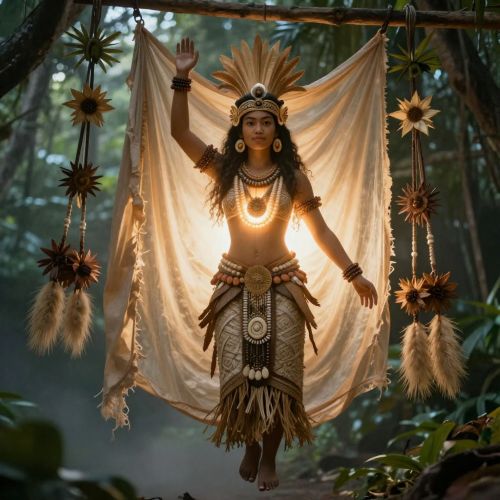Rapa Nui Mythology
Rapa Nui mythology represents the spiritual heartbeat of Easter Island, one of the most remote inhabited places on Earth. Shaped by Polynesian heritage and the island’s unique environment, these stories blend divine forces, ancestral power, and cultural traditions that helped the Rapa Nui people thrive for centuries. Their mythology lives on through rituals, sacred sites, and the iconic Moai statues standing guard along the coastline.
At the center of Rapa Nui mythology is the creator god Makemake, the supreme deity responsible for shaping the world and bringing life to the island. Believers honor Makemake as a powerful figure who governs fertility, prosperity, and spiritual strength. His presence is closely associated with the Birdman cult, one of the most important religious traditions in Rapa Nui history.
The Moai statues embody another major aspect of Rapa Nui mythology. These monumental stone figures represent revered ancestors who continue to protect and guide their descendants. Positioned to face the villages, Moai were believed to channel mana, a sacred energy that ensures community well-being. Each statue stood on a platform known as an ahu, turning the landscape into a vast spiritual network connecting the living with the divine.
The Tangata Manu, or Birdman cult, emerged after Moai construction slowed. This annual ceremonial competition determined the island’s spiritual leader. Warriors selected by rival tribes attempted to retrieve the first sooty tern egg from the cliffs of Motu Nui, a dangerous offshore islet. The victorious warrior’s sponsor was recognized as the Birdman, a role symbolizing divine favor and political authority. This tradition reflects themes of rebirth, resilience, and sacred connection to nature.
Rapa Nui mythology also includes guardian spirits, sea creatures, and shape-shifting beings who inhabit oceans, caves, and volcanic craters. Respect for these forces is evident in traditional art, tattoos, chants, and petroglyphs carved across the island. These symbols preserve spiritual knowledge and honor the protective bond between humans and the natural world.
Today, Rapa Nui mythology remains a living part of the island’s cultural identity. Despite historical challenges, the Rapa Nui people continue to celebrate their heritage through festivals, preservation of sacred sites, and teaching ancestral stories to younger generations. The mythology of Rapa Nui stands as a powerful reminder of how belief, resilience, and creativity can shape the destiny of a community — even in the world’s most isolated landscapes.



